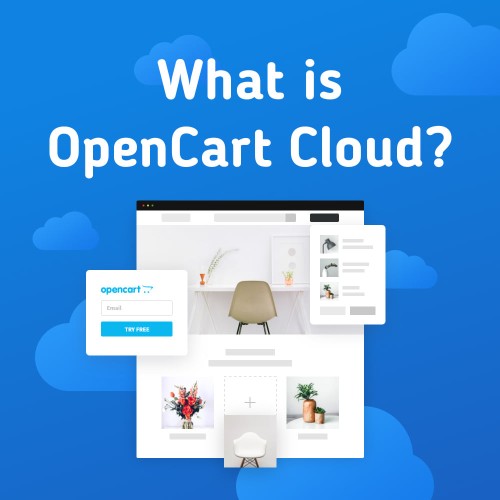Understanding Revenue Attribution in SaaS to Maximize Your Marketing Channels
Revenue attribution is one of the latest buzz terms in marketing circles—and with good reason. It’s a useful way to measure the success of your marketing efforts, linking your revenue generation directly to the tactics that inspired it.
In this article, we’re going to take a look at the ins and outs of revenue attribution, the models you can use to carry it out, and the positive impacts it can have across your entire business.
What is Revenue Attribution?
Revenue attribution is the process of matching the sales revenue your company receives to specific marketing costs. By connecting individual purchases to their original touchpoints, you can determine which campaign, copy, or keyword introduced the lead to your brand.
This gives marketers valuable insights into which strategies are having the most positive impact on your bottom line. This helps inform future marketing efforts by empowering teams to make data-driven decisions, allowing for optimized marketing budgets and improved overall performance.
Understanding different attribution models and best practices in revenue attribution is crucial for large and small businesses alike. It helps them make data-driven decisions and optimize their marketing strategy.
Revenue Attribution vs. Conversion Tracking
Conversion tracking provides a simple way to track the specific actions of your leads and customers in response to your marketing efforts. This could be subscribing to your mailing list, clicking an embedded link in an email, or even how much time they spend on the landing pages of your eCommerce website. When the user performs the predetermined action you've set as your goal, this counts as a conversion.
Revenue attribution, on the other hand, tracks the specific marketing action that led to the conversion. This allows you to match specific actions to their results further down the sales funnel, ultimately seeing exactly how much revenue they generate.
Both approaches can be used when A/B testing marketing campaigns. However, just because a particular campaign leads to the highest number of conversions, it doesn’t necessarily mean it generates the most revenue.
Revenue attribution allows you to map which campaigns are the most profitable, making it an ideal approach for businesses in search of the highest possible marketing ROI.
Free-to-use image sourced from Pexels
How Do You Measure Revenue Attribution?
Measuring revenue attribution involves assigning credit to the channels that led to a sale. How much credit each channel receives depends on the model you’re using—and there are plenty to choose from.
Single-Touch Attribution Models
Single-touch attribution models have you assign a conversion to just one touchpoint (usually, the original visitor source). For example, if a customer finds your landing page by clicking on a Facebook ad, that campaign would receive credit for the revenue.
When using single-touch attribution, credit is usually assigned to either the first or last touchpoint that was interacted with before a conversion was made.
First Touch
The first touch attribution model credits the conversion to the very first customer touchpoint. All credit is assigned to this regardless of whether the customer interacted with other touchpoints before purchasing.
This is one of the most commonly used B2C attribution strategies and is also useful for B2B businesses. Conversion tracking provided by the distribution platform (Google Analytics, Facebook, Twitter, or even your SaaS CMS) is typically used to assign credit.
Last Touch
The last touch model credits the final touchpoint a customer interacted with before purchasing. For example, they may have visited a landing page via a targeted ad and signed up to your mailing list but not made a purchase.
If you then sent them a marketing email with a discount code, which they followed a link from to make a purchase, your email marketing would receive credit for this. That’s because it was this final touchpoint that ultimately led to a closed deal.
This particular revenue attribution model is useful for determining which touchpoints are the most effective purchase influencers.
Multi-Touch Attribution Models
While single-touch revenue attribution models are useful for assigning credit to a single event, they’re less effective in determining the success of entire campaigns.
In B2B especially, there are many moving parts and important touchpoints that contribute to a sale, which single-touch models largely ignore.
This is why many businesses opt for multi-touch models instead. These assign credit to the various channels that contribute to the final conversion, helping you better understand the customer journey as a whole.
Image sourced from ruleranalytics.com
Linear Attribution
A linear attribution model gives equal credit to every touchpoint in the customer journey. So if, before making a purchase, a customer fills out an email subscription form, participates in a product webinar, and speaks with a sales advisor, all three activities would be weighted equally.
As each touchpoint is assigned equal merit, this is a relatively simple method for attributing revenue. However, it can make it hard to understand which touchpoints have contributed most to the conversion and should therefore be prioritized as part of future efforts.
Time Decay Attribution
A time decay attribution model also credits every touchpoint in the customer journey, but it weights them differently. More recent touchpoints are credited more for the conversion, while earlier touchpoints receive less credit.
This uses the same philosophy as the last touch attribution model; that the most recent touchpoint probably played the largest part in driving the conversion. However, unlike that model, it doesn’t discount the previous touchpoints either.
While this model correctly attributes purchases to later engagements, however, it does somewhat disregard the initial touchpoints that introduced a customer to your brand, which are arguably still a key part of generating revenue.
U-Shaped Attribution
The U-shaped model is perhaps the most balanced method for assigning credit. It gives more importance to the last touchpoint, akin to the time decay model, while also giving greater weight to the first touchpoint.
Touchpoints in the rest of the sales pipeline are also given credit but are less heavily weighted.
Data-Driven Attribution Model
Data-driven revenue attribution uses machine learning to create custom attribution models for each business, rather than relying on the general rule-based models we‘ve discussed above.
Customer behavior is analyzed to identify patterns among users who convert, allowing for credit to be assigned to the most relevant touchpoints regardless of where in the customer journey they occur.
Before diving into the benefits of revenue attribution, it's worth noting that businesses can leverage this approach to optimize cost-effective revenue-generating strategies like dropshipping.
Dropshipping allows businesses to start selling products without the need for an upfront investment in stock, making it an appealing option to start dropshipping for free. With the insights gained from revenue attribution, businesses can identify the most profitable marketing channels to promote their dropshipping ventures, maximizing their ROI.
Additionally, revenue attribution plays a crucial role in reconciling accounts, ensuring that the financial data aligns with the actual revenue generated through various marketing efforts.
Benefits of Revenue Attribution
Revenue attribution isn't just about optimizing marketing strategies; it also plays a crucial role in ensuring financial accuracy. By accurately attributing revenue to specific marketing efforts, businesses can reconcile accounts and align their financial data with the actual impact of various marketing channels. This not only provides a clear picture of marketing ROI but also aids in making informed decisions when allocating budgets and resources.
Revenue attribution can have far-reaching benefits for large and small businesses alike. Here are a few examples.
Image sourced from ruleranalytics.com
Forecasting and Planning
Revenue attribution helps businesses to better understand the decision-making processes of their buyers. This is especially useful when forecasting and planning as it helps provide accurate timescales to work to.
For instance, retail businesses can use revenue attribution to analyze the impact of different marketing strategies on their sales, including the effectiveness of retail management software in boosting revenue.
Analyzing and evaluating the effectiveness of your revenue-generating activities also provides you with results benchmarks, giving you targets to work toward that can further inform your forecasting and planning efforts.
Customer Segmentation
Revenue attribution reports can provide you with insights into which customer segments are generating the most revenue for your business.
Understanding the characteristics and behaviors of these segments allows you to tailor your marketing initiatives to your target audience, allowing you to turn even more leads into customers.
Understanding the Customer Journey
Understanding the customer journey is crucial to optimizing it to maximize sales. With the majority of B2B sales cycles taking anywhere from three to nine months, there are often a multitude of touchpoints that should be analyzed and evaluated.
Image sourced from superoffice.com
Revenue attribution can help you paint a clear picture of the average customer journey that your leads go on and which touchpoints are most valuable in securing conversions along the way.
Accounting for the entire customer journey through detailed revenue attribution allows businesses to make more informed decisions when planning future sales efforts.
Sales and Marketing Alignment
After carrying out revenue attribution, your marketing teams will have a wealth of valuable data to share with your sales teams. This gives your reps access to information about which deals they should be prioritizing and the motivations of your customers.
You’ll also be able to target your marketing efforts toward activities that have historically led to sales during previous interactions. This can help your marketing teams make better-informed decisions when creating images for ads, carrying out SaaS link building, or drafting blog posts.
Best Practices for Revenue Attribution
Here are a couple of best practices to follow that’ll help you get the most out of the revenue attribution process.
Set Goals
Setting clear goals will help guide your revenue attribution efforts and ensure that you collect meaningful data.
Rather than focusing on final conversions and sales metrics alone, ensure that your organizational goals are created with revenue in mind.
Set expectations for the amount you expect to generate and ensure that these goals are well communicated across both your marketing and sales teams.
Collect Data from Multiple Sources
Utilize a customer relationship management (CRM) platform to store all the marketing data you collect from various sources. This can help eliminate the risk of siloed data slowing down your revenue attribution process, which is one of the top challenges many businesses face.
Image sourced from ruleranalytics.com
This will ensure your data is accessible across your entire organization and that every department has a comprehensive understanding of how customers interact with your brand.
Test Your Marketing Effectiveness with Revenue Attribution
Carrying out revenue attribution provides you with lots of useful data that you can use to assess the effectiveness of your marketing, giving you insights into the entire buying journey of your customers.
With revenue attribution, you’ll be able to make data-driven decisions about your future marketing efforts, allowing you to make plans that will ultimately result in more effective marketing initiatives and higher conversion rates.




Login and write down your comment.
Login my OpenCart Account